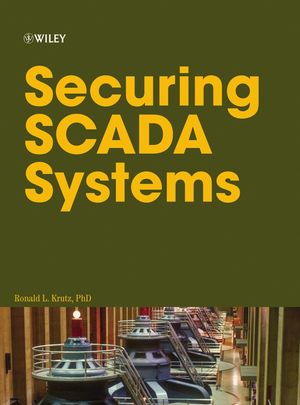SCADA System Architecture
- Operator: Human operator who monitors the SCADA system and performs supervisory control functions for the remote plant operations
- Human machine interface (HMI): Presents data to the operator and provides for control inputs in avariety of formats, including graphics, schematics, windows, pull-down menus, touch-screens, and so on.
- Master terminal unit (MTU): Equivalent to a master unit in a master/ slave architecture. The MTU presents data to the operator through the HMI, gathers data from the distant site, and transmits control signals to the remote site. The transmission rate of data between th MTU and the remote site is relatively low and the control method is usually open loop because of possible time delays or data flow interruptions
- Communications means: communication method between the MTU and remote controllers. Communication can be through the Internet, wireless or wire networks, or the switched public telephone network.
-Remot terminal unit (RTU): Functions as a slave in the master/ slave architecture. Sends control signals to the device under control, acquires data from these devices, and transmits the data to the MTU. An RTU may be a PLC. The data rate between the RTU and controlled device is relatively high and the control method is usually closed loop.
 |
| Image Saurce: zinatullin.com |
SCADA Systems
SCADA Field INstrumentation
PLCs and RTUs
Remote Communications Networks
SCADA Host Sofware
A general diagram of a SCADA system is shown in Figure 1-3
Modern SCADA architectures rely heavily on standard protocols and digital data transmission. For example, a communications protocols such as the Foundation Fieldbus, which is discussed in chapter 3, is applied in conjunction with industrial Ethernet radios. These Ethernet radios provide data rates of 512 Kbps, a large increase over those provided by EIA-323 serial links. For security, industrial Ethernet access points use spread-spectrum frequency hopping technology with encryption.
As discussed previusly, a SCADA architectura comprises two levels: a master or client level at the supervisory control center and a slave or data server level that interacts with the processes under control. In addition to the hardware, the software components of the SCADA architecture are important. Here are some of the typical SCADA software components:
* SCADA master/ client
- Human machine interface
- Alarm handling
- Event and log monitoring
- Special applications
- ActiveX or Java controls
* SCADA slave/ data server
- Rea-time system manager
- Data processing applications
- Report generator
- Alarm handiling
- Drivers and interfaces to control components
- Spreadsheet
- Data logging
- Archiving
- Charting and trending
SCADA Security
Conclusion of SCADA
About Slave-to- Slave Messaging SCADA
Programmable Logic Controllers (PLCs)
Terminology of PLCs
Retyped from book Scuring SCADA System By Ronald L. Krutz. PhD. Wiley.
 | ||
| Image Saurce: www.wiley.com |




Nice blog... it was good news for cyber SCADA security. I am bit relaxed after reading your post. Thanks for sharing.
ReplyDelete